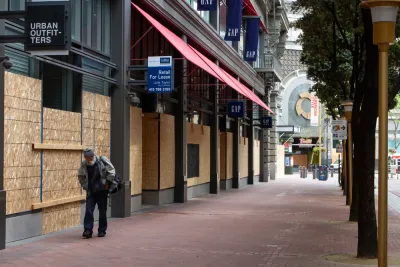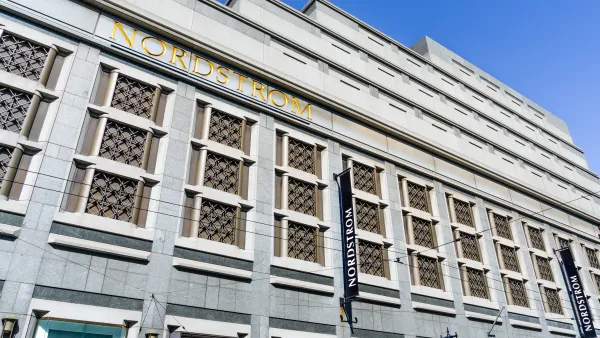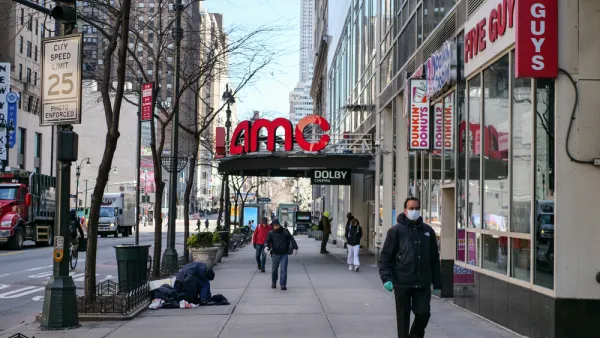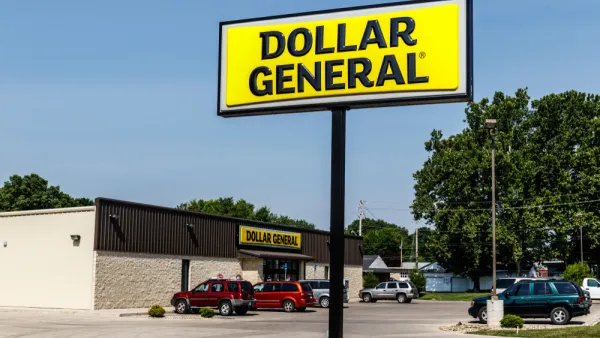The pandemic is accelerating recent trends in commercial real estate with potentially catastrophic consequences for the commercial corridors that play such a fundamental role in the urban fabric.

An article by Jorge González and Jein Park checks in with the state of commercial corridors, which the article calls the "backbone of neighborhoods."
Despite their centrality to so many neighborhoods commercial corridors are dealing with major destabilizing forces, and according to the article that destabilization reaches far beyond the businesses owners effected by the economic effects of the pandemic. " Increased storefront vacancies not only indicate economic hardship for property owners, businesses, and local governments (through reduced fiscal revenues), but they also affect the surrounding communities," write González and Park.
The article identifies one critical trend: The pandemic is accelerating a decade-long trend of rising retail vacancies.
Today, Yelp data show permanent business closures have increased steadily since the pandemic began, and as of September, 60 percent of the 160,000 closures registered in the platform were permanent. The hardest-hit businesses are restaurants, retail stores, beauty stores and spas, bars and nightlife venues, and fitness venues—key components of commercial corridors.
The negative effects of vacancies (e.g., reduce property values, fire risk, crime, and negative health effects) can be mitigated by local governments, according to the article, even if the federal government never puts together a second round of economic stimulus. Among the suggested prescriptions for the economic downturn for commercial corridors during the pandemic, the article suggests grants and loans, repurposing of public spaces previously devoted to automobiles, relaxed zoning and permitting, and public art programs, vacancy taxes, and more.
Each recommendation includes more detail in the source article.
FULL STORY: Local Policies Can Protect Commercial Corridors as the Pandemic Continues

Analysis: Cybertruck Fatality Rate Far Exceeds That of Ford Pinto
The Tesla Cybertruck was recalled seven times last year.

National Parks Layoffs Will Cause Communities to Lose Billions
Thousands of essential park workers were laid off this week, just before the busy spring break season.

Retro-silient?: America’s First “Eco-burb,” The Woodlands Turns 50
A master-planned community north of Houston offers lessons on green infrastructure and resilient design, but falls short of its founder’s lofty affordability and walkability goals.

Test News Post 1
This is a summary

Analysis: Cybertruck Fatality Rate Far Exceeds That of Ford Pinto
The Tesla Cybertruck was recalled seven times last year.

Test News Headline 46
Test for the image on the front page.
Urban Design for Planners 1: Software Tools
This six-course series explores essential urban design concepts using open source software and equips planners with the tools they need to participate fully in the urban design process.
Planning for Universal Design
Learn the tools for implementing Universal Design in planning regulations.
EMC Planning Group, Inc.
Planetizen
Planetizen
Mpact (formerly Rail~Volution)
Great Falls Development Authority, Inc.
HUDs Office of Policy Development and Research
NYU Wagner Graduate School of Public Service




























